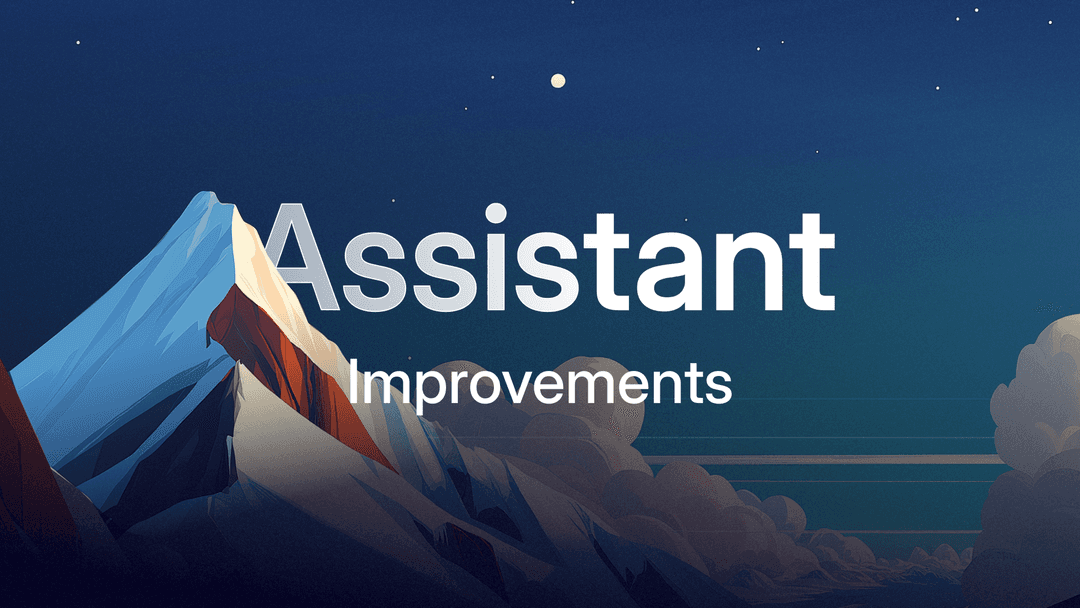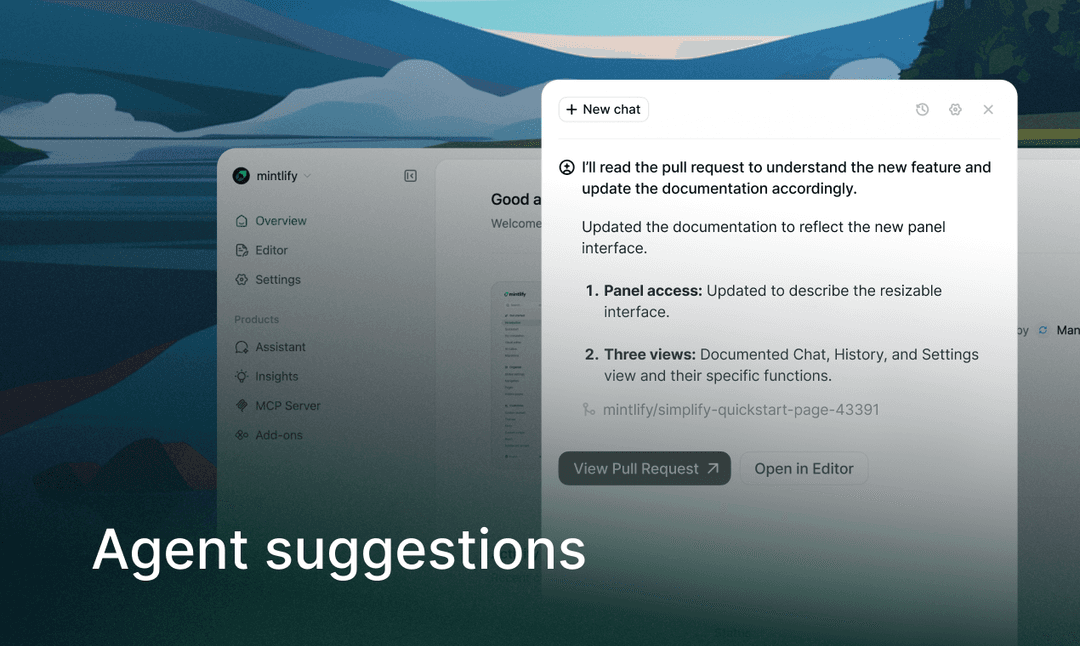Emma Adler
Contributor @ Hackmamba
Share this article

This guide covers when and how to hire your first technical writer, based on insights from experienced writers who were first documentation hires at their companies. Key success factors include providing proper access and tooling, looking for candidates with initiative and curiosity, and ensuring the writer has support systems rather than expecting them to build everything from scratch.
Hiring your first technical writer feels obvious in hindsight, but rarely in the moment. Founders know documentation is important. Teams start drowning in support questions. Engineers grumble about having to write. And then, usually after too much pain, someone says it out loud: we need a writer.
But when that hire finally happens, it's often too late — and too messy.
We spoke with various technical writers who were the first documentation hire at their company:
- William Imoh, founder of Hackmamba, a technical writing content agency.
- Diana Payton, a lead writer who helped multiple startups build their documentation practice.
- Nicholas DeWald, technical writer at Prove, focused on developer education.
- Dave Garrett, senior writer at Epsilon, with prior roles at Iora Health and Six River Systems.
If you're considering hiring your first technical writer, these stories will help you avoid the usual pitfalls.
How to know when to hire a technical writer
It rarely happens in a single moment. Instead, it's the accumulation of pain. Docs fall out of date, engineers start avoiding the topic, and PMs are forced to write help articles. The experience for users gets patchy, fast.
For William, the tipping point was when his engineering team no longer had the bandwidth to do even the bare minimum.
“They could draft outlines or basic guides, but it wasn't enough to teach the end user or developer how to integrate with our solution,” he told us.
“That was fine when we had one-on-one conversations, but it broke as we grew.”
Others echoed that. Diana described working with teams that had strong docs for the API, but nothing for the UI because no one had been assigned ownership. Support eventually started writing their own parallel docs just to fill the gaps.
Dave stepped into a similar mess. Developers were handling all the writing themselves. “They didn't like it,” he said, “but they had to do it.” When he joined, there was no onboarding, no plan — just a backlog of documentation tasks and no structure at all.
And Nicholas pointed out that even when docs exist, they often feel fragmented: “If someone's updating authentication, they focus on just that. But no one owns the full experience. That's why you need someone to keep things coherent.”
If any of this sounds familiar, you're probably past due for a dedicated writer.
Why most writers start from zero
In an ideal world, your new hire would walk into a system with clear goals, tooling, and a defined review flow.
That's rarely what actually happens.
At Iora Health, Dave had just two days of onboarding before his manager left the company. “There were no cadences, no documented priorities,” he said. “I cleaned up the Confluence space, helped with the newsletter, and slowly tried to make sense of it all. It was chaotic, but fun. Still, not a setup for success.”
Nicholas shared that he had to figure out the review process by trial and error. If a doc was technical, he'd ping the engineering lead. If it touched product strategy, he'd go to the PM. “I've published things only to find out afterward that the code didn't match or branding was off,” he said.
Sometimes all it takes is a Notion space with good bones to provide a head start. Diana recalled a company that asked every new hire to at least skim the full documentation workspace during onboarding. That gave her enough context to map out what was missing and where to go next.
When that context doesn't exist, writers spend their first few weeks, or months, chasing it down. Access to environments, source code, product specs. A sense of who to ask, what to prioritize, and how decisions get made. It's hard to move fast when you're spending all your time just figuring out where to look.
You don't need perfect systems — but you need something
A common mistake teams make is hiring a writer and expecting them to build both the content and the infrastructure to support it.
That's a heavy lift.
Start with access: to repos, product environments, and any existing internal docs. Then give them tooling that doesn't get in the way.
Nicholas noted that having a modern documentation platform — he mentioned Mintlify — made a huge difference. “If you expect the technical writer to build out the platform too, that's a huge extra workload,” he said. “It slows everything down.”
At Epsilon, Dave's team commits docs via Bitbucket and publishes through Zoomin. One writer is even automating their publishing flow, and their house style guide is built into their review process.
That kind of structure pays off. It means documentation doesn't just get written; it becomes a shared workflow.
Diana emphasized how helpful it is when companies already have documentation standards. “A style guide, even a rough one, makes a huge difference. Otherwise you're just debating formatting or cleaning up things no one agreed to in the first place.”
What to look for in your first hire
Everyone we spoke to came back to one trait: initiative.
William put it bluntly: “I once hired someone reactive. They waited to be told what to do. I've learned to ask candidates how they investigate things — how they move when there's no roadmap.”
Dave framed it as curiosity. Dropped into a complex system, will they poke around and figure things out? Or wait for instruction? “A curious writer will keep improving the system,” he said. “Without that, they're just clocking in.”
Technical comfort helps too. Nicholas noted that you don't need to write code — but reading it? Understanding what changed? That's essential if you're documenting developer tools or APIs.
And don't forget teaching ability. Diana pointed out that your first hire often sets the tone for everyone who comes after. “If a company is hiring a first technical writer, odds are, there will eventually be a team. That first writer becomes the person others learn from.”
What success actually looks like
When documentation becomes part of how the product ships, you've made it.
Diana helped one company codify docs into their Definition of Done. Documentation couldn't lag behind features — it had to ship alongside them. They even set SLAs for reviews.
Nicholas tracks user behavior through analytics to see what's working. That data helps him prioritize high-impact areas instead of reacting to every request. “I can't do everything,” he said. “But I can focus my energy where it matters.”
And for Dave, success is quiet: “When teams say, ‘We just send a link now,' instead of explaining something over and over — that's when you know it's working.”
The real signal isn't just the doc itself. It's whether other teams trust the system enough to rely on it.
Avoiding the usual traps
The biggest mistake? Thinking a writer alone can fix the system.
They can bring the blueprint, but they can't pour the concrete by themselves.
William now asks direct questions about collaboration in interviews. Diana has joined companies where she was the second writer, but still had to rebuild the system from scratch because the first hire had been left stranded.
Nicholas put it best: “Documentation was everyone's job. But that meant nobody really owned it.”
Final thoughts
Hiring a technical writer is an investment in clarity for your users, your team, and your future velocity. But the impact depends entirely on what kind of environment they're walking into.
The right writer can bring structure, momentum, and long-overdue order to your docs. But they need access. They need systems. And they need a team that sees documentation as part of the product, not an afterthought.
So before you make the hire, ask yourself: are we ready to set them up for success?
Because they can't do it alone. But they can do a lot, if you let them.
More blog posts to read

Inside our effort to improve the Mintlify assistant
A data-driven look at improving the assistant, powered by ClickHouse and deeper feedback analysis.
December 12, 2025Patrick Foster
Software Engineer

Introducing the next step towards self-updating docs
The agent now monitors your codebase, proactively identifies documentation updates, and surfaces needed suggestions to your team.
December 8, 2025Han Wang
Co-Founder
Emma Adler
Contributor @ Hackmamba